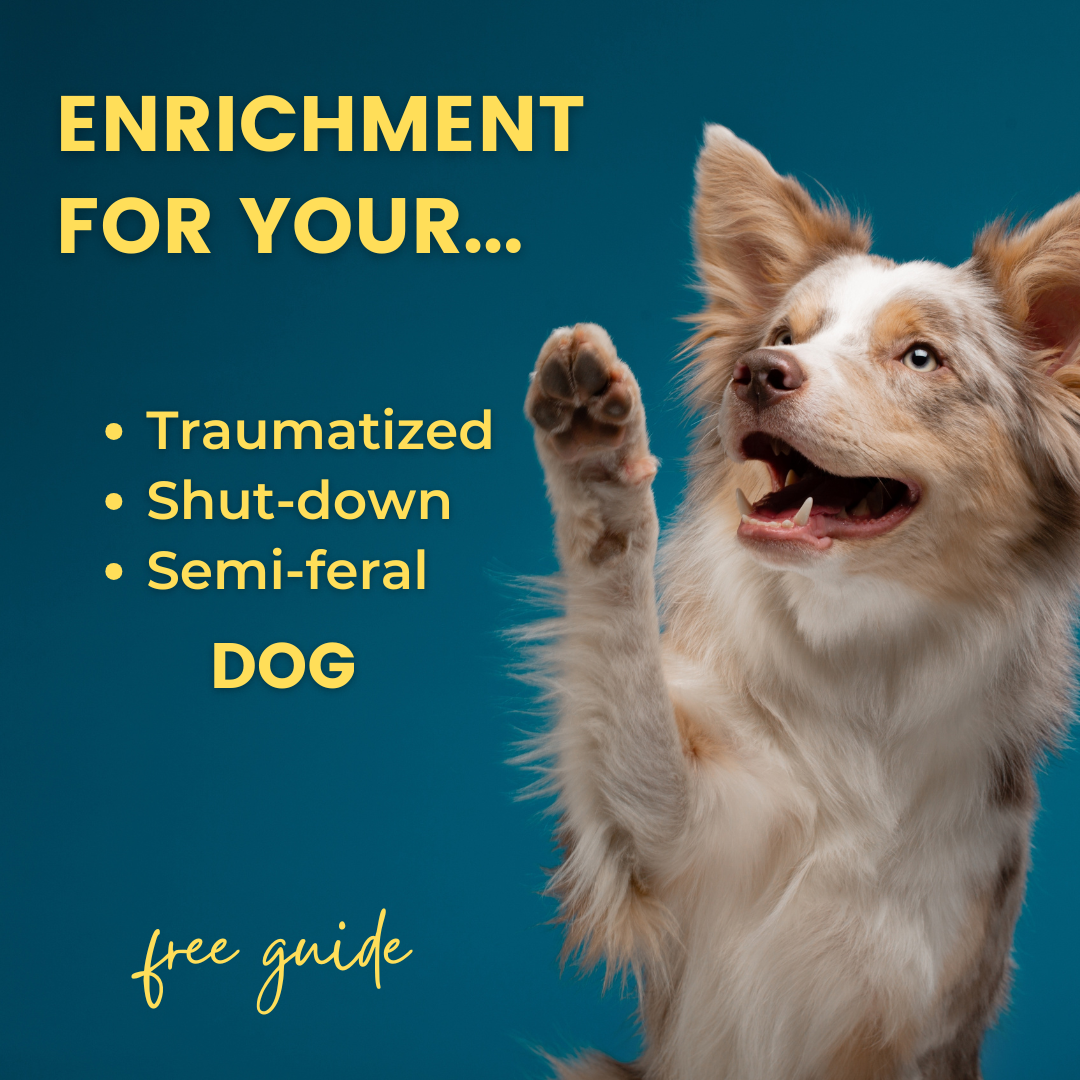At-home dental care for anxious dogs
Feb 12, 2025
Dental disease and gum disease can cause pain, discomfort, and can negatively affect our dogs' overall health and wellbeing. Any kind of pain, including pain associated with dental issues, has the potential to worsen fear and aggression. That's particularly important for those us struggling to help our fearful pups gain confidence and learn new skills to cope with the human world.
Brushing your dog's teeth daily is the best way to maintain good dental health. If you want to learn how to brush your pup's teeth, check out our self-paced course, Healthy Smiles.
But what if you can't touch your dog's mouth at all? It's worth getting started on training right away. In the meantime, here are four things you can do to improve your dog's dental health in the meantime. (For even more info, check out our free webinar on dog dental products.)
#1: Dental Chews
While not nearly as good as brushing your dog's teeth, dental chews approved by the Veterinary Oral Health Council (VOHC) can help remove or slow the accumulation of plaque. As a bonus, many dogs LOVE dental chews. The Dogkind team dogs reviewed some of the VOHC-approved chews here.
#2: Water Additives
There are some VOHC-approved water additives that slow down the accumulation of plaque. I've tried these with my own dogs, and they didn't seem to notice (or at least, they didn't mind) any change in the water's taste.
#3: Dental Diets
There are several kibbles produced for dogs that reduce the buildup of plaque and tarter. Many of these are prescription-only, but some are commercially available. This might be a good option for you if your dog doesn't have any special dietary needs. You can look at the list approved by the VOHC here.
#4: Dental Cleaning By Your Veterinarian Under Anesthesia
All dogs should have regular dental cleanings unless your veterinarian recommends otherwise. My own vet recommends twice yearly cleanings for our small dog. Dental cleanings should be done by your veterinarian, with your dog under anesthesia. Anesthesia-free dentals are popular but are not recommended and provide no benefit to your dog, and may actually do harm. You can read about the problems with anesthesia-free dentals here.
Getting to the vet with a fearful dog can be pretty stressful for both of you. Read our blog on how to make vet visits less stressful.
I hope you're inspired to take action to protect your dog's dental health, even if you can't yet touch their mouth. If you try any of the suggestions in this blog, we'd love to hear from you! You shoot me an email (info@dogkindtraining.com).
Looking for more information on dog dental products? Check out our free webinar, "Making Sense of Dog Dental Products."



